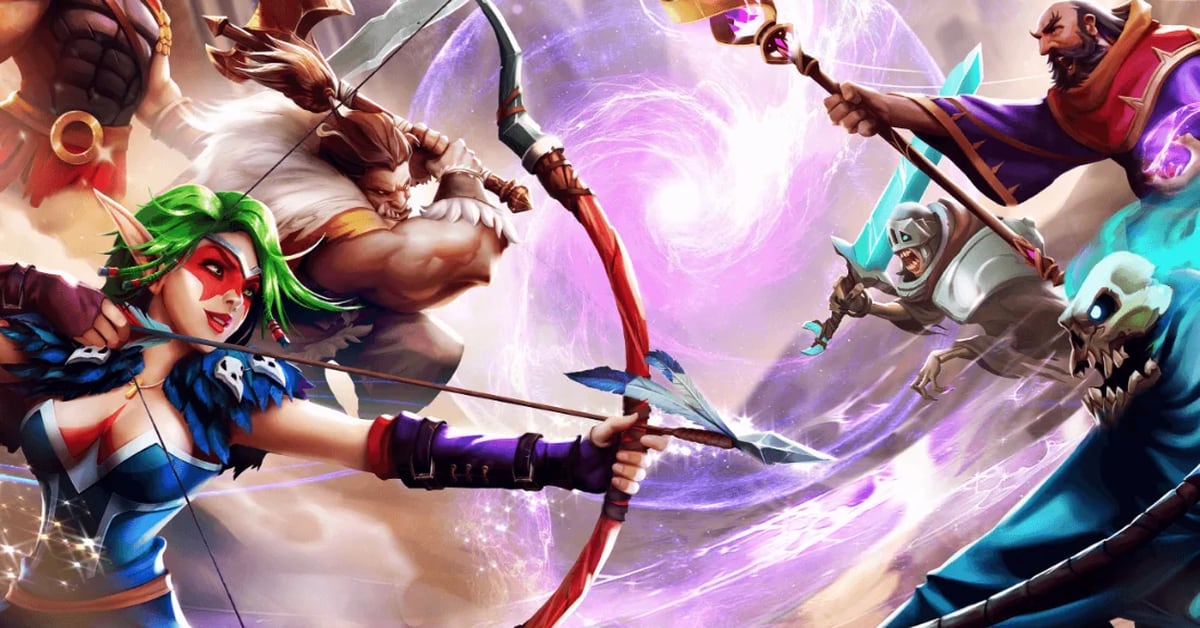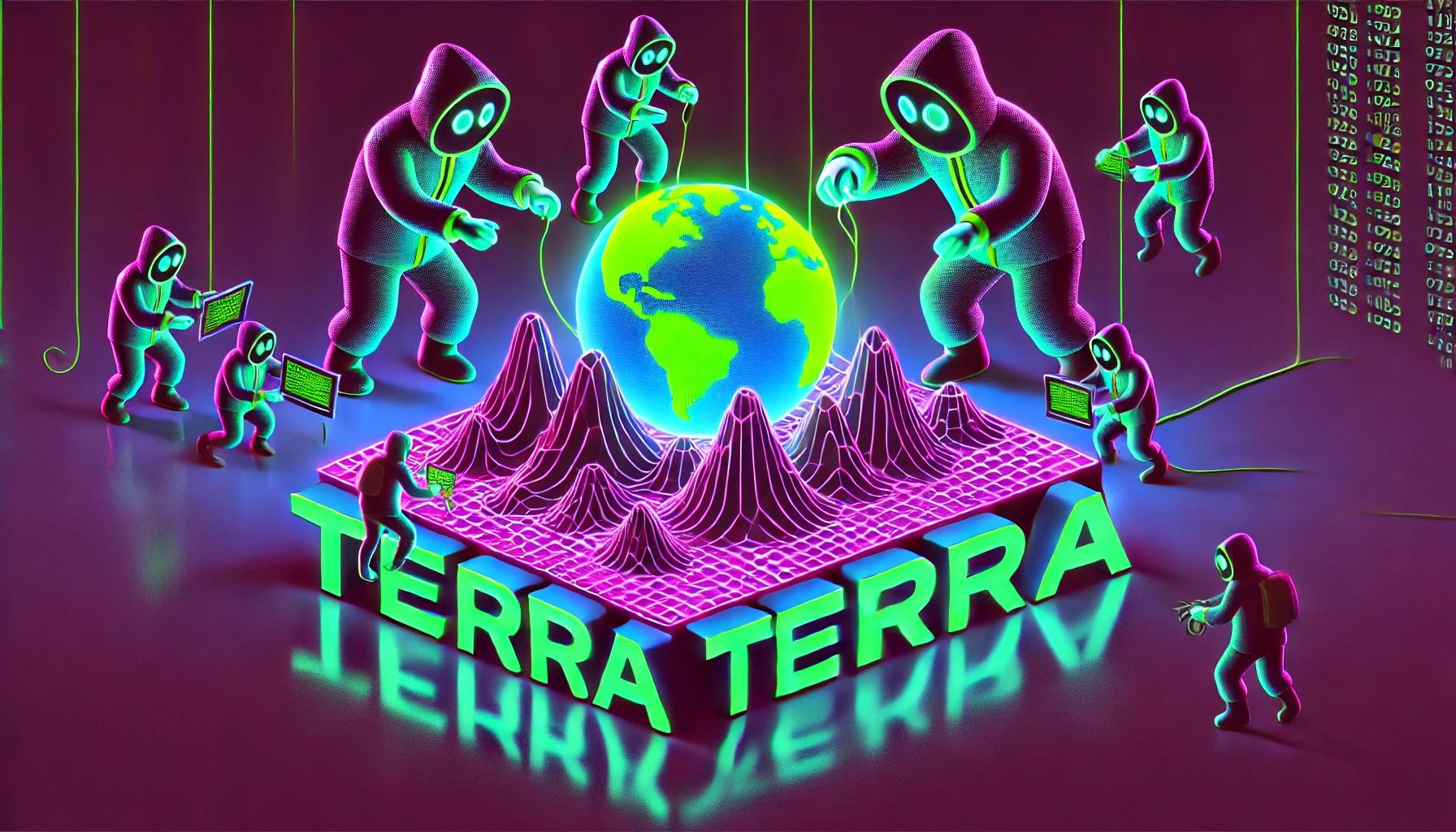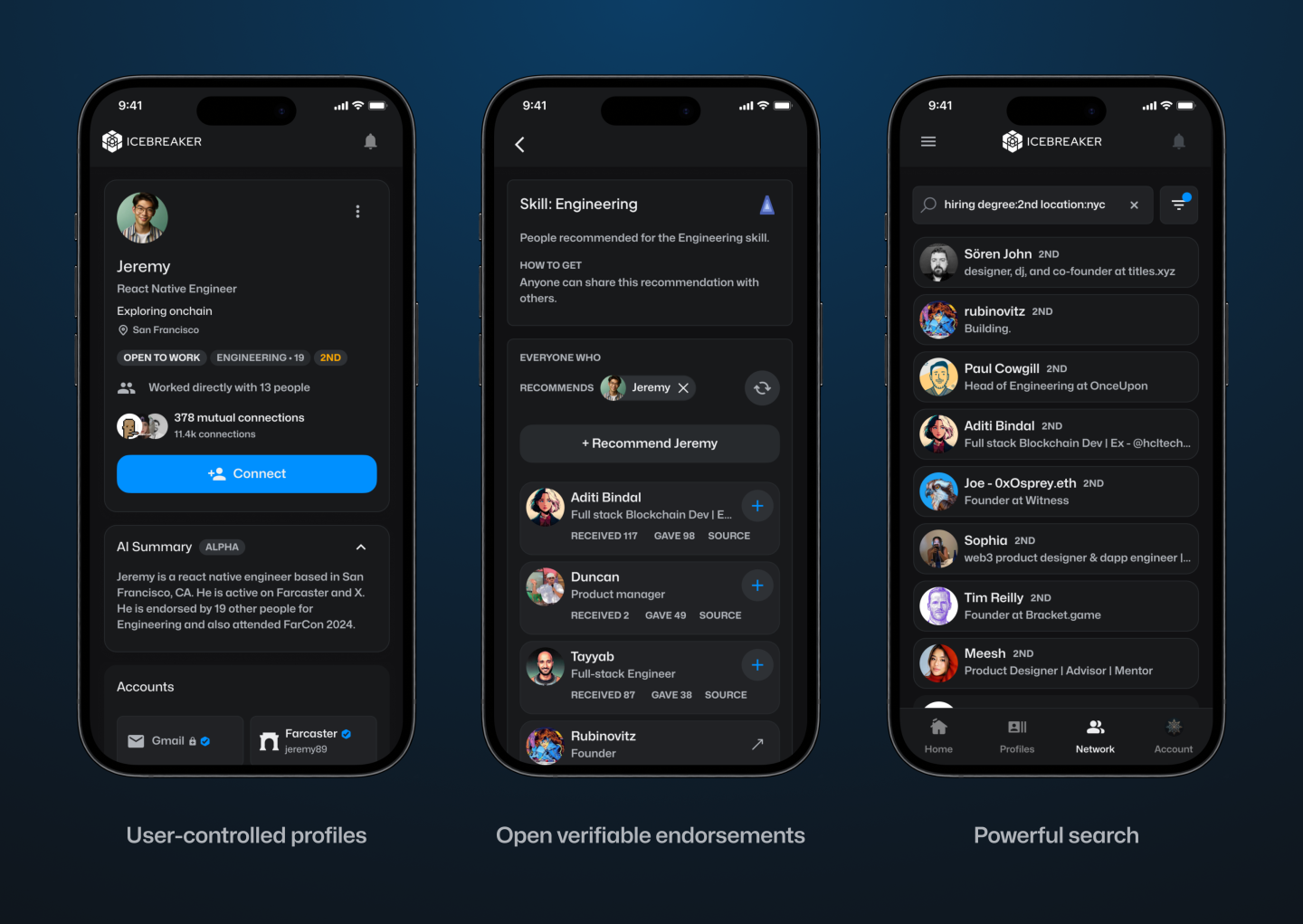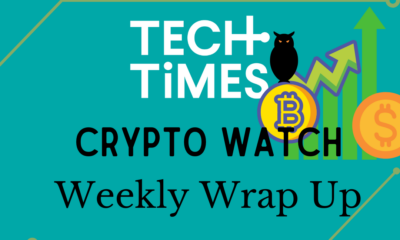News
What works and what doesn’t

I think cryptocurrencies as a whole are at a tipping point. With the recent “bull run” either pending or halted with prices below 2021 highs, the growing crypto-speculative mania of the last decade seems to have subsided. This rewards products that deliver on their promises, rather than simply making big promises.
This includes blockchain-powered gaming, which has been on the horizon since Ethereum announcementand which I’m happy to report is actually becoming a real thing. In the past, “blockchain games” have often been hasty collections designed to appeal to speculators rather than gamers. But as an embarrassingly experienced gamer who spent his childhood loading Doom from a DOS command line, I’m happy to report that blockchain games are coming out all baked: that is, many are at least as fun as games that have nothing to do with cryptocurrency.
What follows is a quick and easy round of reviews of a selection of blockchain games. Each game is judged on standard gameplay and graphics parameters. But unlike more conventional games, blockchain games should also be evaluated on their onboarding experience and tokenomics.
Onboarding is important because games are a great way to attract people with no cryptocurrency experience, and hitting them with a long list of complicated tasks before they can play is a great way to immediately lose interest. And tokenomics is important because it’s hard to do well, and the temptation for developers to be shortsighted and self-interested is strong.
Also worth noting: The reviews below are mostly based on fairly short playtime (and few, if any, of these games are deep enough to require more). The reviews are also based on current state of these games: Roadmaps and projections are all well and good, but given the financial stakes, this is a “verify, don’t trust” situation.
Note: I had also planned to review Nifty Island and My Pet Hooligan. But Nifty Island was down for maintenance when I tried to log in. While My Pet Hooligan (which is in Early Access) looks and plays great offline, it is a PVP shooter and the game’s few servers were uncooperative when I tried to play.
Hamster Fight (Mobile/Telegram)
It’s new, it’s hot, it’s incredibly effective at what it was designed to do, but Hamster Fight It’s not really “a game.” Right now, the only real “gameplay” is clicking on an item to get points, then spending those points to get more. If there is an actual “Kombat,” it’s completely opaque to me as a new player. Instead, Hamster Kombat, in which you play the CEO of a growth-oriented cryptocurrency exchange, gamifies social engagement, offering in-game “gold” for things like following and promoting the game’s X/Twitter account or recruiting friends.
The scam vibes of this pyramid scheme built on nothing are impossible to ignore, but one thing cannot be denied: it is working, bringing the “game” to enormous popularity (see Jeff Wilser’s recent feature on the growth of Hamster Kombat and other TON-based games. The little bit of gameplay is incredibly addictive (I’m clicking right now…). And in most other respects, Hamster Kombat is first rate, with a flawless interface and, most impressively, a truly effortless onboarding experience that’s integrated directly into Telegram. This takes the edge off of the scam feeling and leads one to believe that it promises that a real game will emerge from beneath this perpetual self-promotion machine.
Unfortunately, though, gameplay evolution seems to be a low priority for the developers at the moment. Hamster Kombat’s roadmap includes gameplay updates like “Squad Kombat,” but by far the most attention is on an upcoming airdrop, with a token that is promised to be integrated into the gameplay. It seems unlikely that the token will be released before something resembling an actual game, so between that and the fact that the financial prank is probably causing a lot of people to waste their lives clicking away on phones, hamsters get a “D” in tokenomics.
Pixel (web browser)
Proof that low-hanging fruit can be delightful. Pixels is a resource-gathering and building game, a bit like Farmville, but with a lot more style. The writing is also good, in its cute way, which is really impressive. There are also promised and plausible extensions into more active forms of gameplay, like dungeons, but the simple harvest-cook-sell cycle is satisfying enough on its own. There are definitely periods of downtime at the beginning of the game, but that’s what you’re signing up for: this is a game you can run in the background and check in on every now and then (I’m prepping Popberry Jam as I write this).
The graphics and overall vibe of the game are also excellent. The game is designed in a nostalgic 8-bit style, one of the apparent reasons why Pixels actually has NFT imports. You can play as your very own Pudgy Penguin or Bored Ape, and the Pixels team has some guidelines that allow any collection to submit game builds of PFP. This is unequivocally fantastic, increasing the value of the entire Web3 space and reflecting what appears to be the team’s more general deep alignment with cryptocurrency ideas and values. At the same time, there is a real downplaying of the possibility of massive growth in token prices, which is equally refreshing.
In what will become a theme, however, I was annoyed by Pixels’ onboarding process, which frankly seems to directly contradict the care and values espoused elsewhere in the game. While access to Metamask was teased, it no longer works for new players, who instead must download and install a boutique wallet for Sky Mavis’ Ronin Network, an EVM chain that has its own flavor of Wrapped Ether (WETH), but otherwise appears to only manage assets on Mavis’ Ronin Network. This is an illustration of a common incentive misalignment in Web3 gaming: there are big incentives to use an attractive game to attract users to your niche network, rather than improving interoperability by using a more widespread public network. It’s a toxic dynamic that the industry should be wary of.
Gods Unchained (PC, Mac, iOS, Android)
It’s time for a horrible confession: in 2019, I decided to spend money on Gods Unchained NFT cards instead of buying a Cryptopunk. I could have retired with a Punk or two by now, but it’s illegal that someone would make fun of me for my choices. (Generally, back then, buying a Punk was just incomprehensibly complex.)
In 2019, Gods Unchained was more of a concept than a working game, so I’m happy to report that it has not only become a game, but it has become a really good game, with a blockchain use case that makes sense. It also has really solid user and trading metrics, with over 200,000 holders recently trading over $250,000 worth of NFT-based cards per day. I’ve also had great luck with matchmaking: the random queues are very short, indicating that a lot of players are online and actually playing, not just trading.
One possible criticism of Gods Unchained is that it is, in essence, a copy of Hearthstone, the CCG based on World of Warcraft. Of course, there are other digital card games with fairly similar formats and gameplay, but GU has detailed similarities, right down to the points and stats of specific (revised) cards. Honestly, though, there is nothing to be ashamed of: Hearthstone is an incredible game, and with familiar mechanics, GU is easy to pick up.
Gods Unchained also looks and plays great, though its designs and art are pretty generic. In particular, the way the game marks the rarity of cards is pretty opaque, taking away an important and fun part of the collectible card game.
That’s not to say there weren’t some drawbacks. GU becoming part of the “Immutable Passport” ecosystem adds a seemingly unnecessary layer of intermediation. Why can’t I just log in with Ethereum via Metamask, where my cards are and which the game eventually connects to anyway? Also, Immutable itself uses Google or email login instead of its own wallet, which seems convenient until you remember that this is already a completely unnecessary step. On the other hand, I was surprised at how easily I was able to reconnect to my pre-Immutable GU account.
Finally, the tokenomics of Gods Unchained don’t matter… and that’s it. Great. You earn cards and packs by playing in a way that, again, will be familiar to Hearthstone players. And there are daily quests that can earn you $GODS tokens, which I assume can be exchanged for real money in some way. But, in stark contrast to Hamster Kombat, these are nice bonuses for playing a game that’s intrinsically rewarding, not bribes for endlessly clicking on a static image.
Guardians’ Guild (iOS & Android)
Graphics and presentation: D
I’ll admit, it’s not my thing, but somehow this roguelite dungeon auto-battler with actual animation is less engaging than clicking on a still image in Hamster Kombat. “Auto-battlers” strike me as desolate artifacts of our era, games that play themselves with the goal of producing player satisfaction without any effort or skill on the player’s part. In the case of Guild of Guardians, the only gameplay seems to be to tap into some heroic special ability if you feel like it, but you’ll “win” either way. I wrote this review while the game was running for me, and I don’t think I missed much.
The game is also aesthetically poor as hell, from mediocre graphics to really bad interface and design, and overall it looks like it was created by contractors working to investor specifications rather than actual game designers. On the plus side, it was easy to log in and I didn’t get an awkward cryptocurrency sales pitch. On the other hand, I can’t imagine any human being would ever care enough about this game to connect a cryptocurrency wallet to it, and its backend tokenomics They are completely standard, with a rights allocation program that seems to favor insiders.
Rumble Racing Star (PC, Mac)
Graphics and Presentation: D
One thing I’ve noticed while doing these reviews is that many games created or supported in Asia still seem to have a token-bubble mentality. Rumble Racing Star’s homepage is a good example, starting with an immediate pop-up encouraging users to spin a wheel and win obscure crypto tokens and NFT prizes. At the same time, I haven’t been able to find Anyone meaningful description of the game token design from the first page. Where would you like usually find a white paper there is only a vague description of the gameplay.
Unfortunately, the game itself reflects this: it’s basic and, to be blunt, wonky as hell. It’s essentially a Mario Kart rip-off with lawnmowers instead of carts, but the tracks, characters, and vehicles are uninspired and, worst of all, the controls are unreliable and “squishy.” This certainly won’t be the last time we see blockchain games that don’t understand that they need to be good games first, but hopefully they are an endangered breed.
Edited by Benjamin Schiller.
News
Terra Can’t Catch a Break as Blockchain Gets $6 Million Exploited

The attack, which exploited a vulnerability disclosed in April, drained around 60 million ASTRO tokens, sending the price plummeting.
The Terra blockchain has been exploited for over $6 million, forcing developers to take a momentary break the chain.
Beosin Cyber Security Company reported that the protocol lost 60 million ASTRO tokens, 3.5 million USDC, 500,000 USDT, and 2.7 BTC or $180,000.
Terra developers paused the chain on Wednesday morning to apply an emergency patch that would address the attack. Moments later, a 67% majority of validators upgraded their nodes and resumed block production.
The ASTRO token has plunged as much as 75%. It is now trading at $0.03, a 25% decline on the day. Traders who took advantage of the drop are now on 195%.
The vulnerability that took down the Cosmos-based blockchain was disclosed in April and involved the deployment of a malicious CosmWasm contract. It opened the door to attacks via what is called an “ibc-hooks callback timeout reentrancy vulnerability,” which is used to invoke contracts and enable cross-chain swaps.
Terra 2.0 also suffered a massive drop in total value locked (TVL) in April, shortly after the vulnerability was discovered. It plunged 80% to $6 million from $30 million in TVL and has since lost nearly half of that value, currently sitting at $3.9 million.
The current Earth chain emerged from the rubble as a hard fork after the original blockchain, now called Terra Classic, collapsed in 2022. Terra collapsed after its algorithmic stablecoin (UST) lost its peg, causing a run on deposits. More than $50 billion of UST’s market cap was wiped out in a matter of days.
Terraform Labs, the company behind the blockchain, has been slowly unravelling its legal woes since its mid-2022 crash. Founder Do Kwon awaits sentencing in Montenegro after he and his company were found liable for $40 billion in customer funds in early April.
On June 12, Terraform Labs settled with the SEC for $4.4 billion, for which the company will pay about $3.59 billion plus interest and a $420 million penalty. Meanwhile, Kwon will pay $204.3 million, including $110 million in restitution, interest and an $80 million penalty, a court filing showed.
News
Google and Coinbase Veterans Raise $5M to Build Icebreaker, Blockchain’s Answer to LinkedIn

Icebreaker: Think LinkedIn but on a Blockchain—announced Wednesday that it has secured $5 million in seed funding. CoinFund led the round, with participation from Accomplice, Anagram, and Legion Capital, among others.
The company, which is valued at $21 million, aims to become the world’s first open-source network for professional connections. Its co-founders, Dan Stone and Jack Dillé, come from Google AND Monetary base; Stone was a product manager at the cryptocurrency giant and also the co-creator of Google’s largest multi-identity measurement and marketing platform, while Dillé was a design manager for Google Working area.

The pair founded Icebreaker on the shared belief that the imprint of one’s digital identity (and reputation) should not be owned by a single entity, but rather publicly owned and accessible to all. Frustrated that platforms like LinkedIn To limit how we leverage our connections, Dillé told Fortune he hopes to remove paywalls and credits, which “force us to pay just to browse our network.” Using blockchain technology, Icebreaker lets users transfer their existing professional profile and network into a single, verified channel.
“Imagine clicking the login button and then seeing your entire network on LinkedIn, ChirpingFarcaster and email? Imagine how many introductions could be routed more effectively if you could see the full picture of how you’re connected to someone,” Stone told Fortune.
Users can instantly prove their credentials and provide verifiable endorsements for people in their network. The idea is to create an “open graph of reputation and identity,” according to the founders. They hope to challenge LinkedIn’s closed network that “secures data,” freeing users to search for candidates and opportunities wherever they are online. By building on-chain, the founders note, they will create a public ledger of shared context and trust.
Verified channels are now launched for
Chirping
Online Guide
Wallet
Discord
Telephone
TeleporterYou can find them in Account -> Linked Accounts Italian: https://t.co/mRDyuWW8O2
— Icebreaker (@icebreaker_xyz) April 3, 2024
“Digital networking is increasingly saturated with noise and AI-driven fake personas,” the founders said in a statement. For example: Dillé’s LinkedIn headline reads “CEO of Google,” a small piece of digital performance art to draw attention to unverifiable information on Web2 social networks that can leave both candidates and recruiters vulnerable to false claims.
“Icebreaker was created to enable professionals to seamlessly tap into their existing profiles and networks to surface exceptional people and opportunities, using recent advances in cryptographically verifiable identity,” the company said, adding that the new funding will go towards expanding its team and developing products.
“One of the next significant use cases for cryptocurrency is the development of fundamental social graphs for applications to leverage… We are proud to support Dan, Jack and their team in their mission to bring true professional identity ownership to everyone online,” said CoinFund CIO Alex Felix in a statement.
Learn more about all things cryptocurrency with short, easy-to-read flashcards. Click here to Fortune’s Crash Course in Cryptocurrency.
Fuente
News
Luxembourg proposes updates to blockchain laws | Insights and resources

On July 24, 2024, the Ministry of Finance proposed Blockchain Bill IVwhich will provide greater flexibility and legal certainty for issuers using Distributed Ledger Technology (DLT). The bill will update three of Luxembourg’s financial laws, the Law of 6 April 2013 on dematerialised securitiesTHE Law of 5 April 1993 on the financial sector and the Law of 23 December 1998 establishing a financial sector supervisory commissionThis bill includes the additional option of a supervisory agent role and the inclusion of equity securities in dematerialized form.
DLT and Luxembourg
DLT is increasingly used in the financial and fund management sector in Luxembourg, offering numerous benefits and transforming various aspects of the industry.
Here are some examples:
- Digital Bonds: Luxembourg has seen multiple digital bond issuances via DLT. For example, the European Investment Bank has issued bonds that are registered, transferred and stored via DLT processes. These bonds are governed by Luxembourg law and registered on proprietary DLT platforms.
- Fund Administration: DLT can streamline fund administration processes, offering new opportunities and efficiencies for intermediaries, and can do the following:
- Automate capital calls and distributions using smart contracts,
- Simplify audits and ensure reporting accuracy through transparent and immutable transaction records.
- Warranty Management: Luxembourg-based DLT platforms allow clients to swap ownership of baskets of securities between different collateral pools at precise times.
- Tokenization: DLT is used to tokenize various assets, including real estate and luxury goods, by representing them in a tokenized and fractionalized format on the blockchain. This process can improve the liquidity and accessibility of traditionally illiquid assets.
- Tokenization of investment funds: DLT is being explored for the tokenization of investment funds, which can streamline the supply chain, reduce costs, and enable faster transactions. DLT can automate various elements of the supply chain, reducing the need for reconciliations between entities such as custodians, administrators, and investment managers.
- Issuance, settlement and payment platforms:Market participants are developing trusted networks using DLT technology to serve as a single source of shared truth among participants in financial instrument investment ecosystems.
- Legal framework: Luxembourg has adapted its legal framework to accommodate DLT, recognising the validity and enforceability of DLT-based financial instruments. This includes the following:
- Allow the use of DLT for the issuance of dematerialized securities,
- Recognize DLT for the circulation of securities,
- Enabling financial collateral arrangements on DLT financial instruments.
- Regulatory compliance: DLT can improve transparency in fund share ownership and regulatory compliance, providing fund managers with new opportunities for liquidity management and operational efficiency.
- Financial inclusion: By leveraging DLT, Luxembourg aims to promote greater financial inclusion and participation, potentially creating a more diverse and resilient financial system.
- Governance and ethics:The implementation of DLT can promote higher standards of governance and ethics, contributing to a more sustainable and responsible financial sector.
Luxembourg’s approach to DLT in finance and fund management is characterised by a principle of technology neutrality, recognising that innovative processes and technologies can contribute to improving financial services. This is exemplified by its commitment to creating a compatible legal and regulatory framework.
Short story
Luxembourg has already enacted three major blockchain-related laws, often referred to as Blockchain I, II and III.
Blockchain Law I (2019): This law, passed on March 1, 2019, was one of the first in the EU to recognize blockchain as equivalent to traditional transactions. It allowed the use of DLT for account registration, transfer, and materialization of securities.
Blockchain Law II (2021): Enacted on 22 January 2021, this law strengthened the Luxembourg legal framework on dematerialised securities. It recognised the possibility of using secure electronic registration mechanisms to issue such securities and expanded access for all credit institutions and investment firms.
Blockchain Act III (2023): Also known as Bill 8055, this is the most recent law in the blockchain field and was passed on March 14, 2023. This law has integrated the Luxembourg DLT framework in the following way:
- Update of the Act of 5 August 2005 on provisions relating to financial collateral to enable the use of electronic DLT as collateral on financial instruments registered in securities accounts,
- Implementation of EU Regulation 2022/858 on a pilot scheme for DLT-based market infrastructures (DLT Pilot Regulation),
- Redefining the notion of financial instruments in Law of 5 April 1993 on the financial sector and the Law of 30 May 2018 on financial instruments markets to align with the corresponding European regulations, including MiFID.
The Blockchain III Act strengthened the collateral rules for digital assets and aimed to increase legal certainty by allowing securities accounts on DLT to be pledged, while maintaining the efficient system of the 2005 Act on Financial Collateral Arrangements.
With the Blockchain IV bill, Luxembourg will build on the foundations laid by previous Blockchain laws and aims to consolidate Luxembourg’s position as a leading hub for financial innovation in Europe.
Blockchain Bill IV
The key provisions of the Blockchain IV bill include the following:
- Expanded scope: The bill expands the Luxembourg DLT legal framework to include equity securities in addition to debt securities. This expansion will allow the fund industry and transfer agents to use DLT to manage registers of shares and units, as well as to process fund shares.
- New role of the control agent: The bill introduces the role of a control agent as an alternative to the central account custodian for the issuance of dematerialised securities via DLT. This control agent can be an EU investment firm or a credit institution chosen by the issuer. This new role does not replace the current central account custodian, but, like all other roles, it must be notified to the Commission de Surveillance du Secteur Financier (CSSF), which is designated as the competent supervisory authority. The notification must be submitted two months after the control agent starts its activities.
- Responsibilities of the control agent: The control agent will manage the securities issuance account, verify the consistency between the securities issued and those registered on the DLT network, and supervise the chain of custody of the securities at the account holder and investor level.
- Simplified payment processesThe bill allows issuers to meet payment obligations under securities (such as interest, dividends or repayments) as soon as they have paid the relevant amounts to the paying agent, settlement agent or central account custodian.
- Simplified issuance and reconciliationThe bill simplifies the process of issuing, holding and reconciling dematerialized securities through DLT, eliminating the need for a central custodian to have a second level of custody and allowing securities to be credited directly to the accounts of investors or their delegates.
- Smart Contract Integration:The new processes can be executed using smart contracts with the assistance of the control agent, potentially increasing efficiency and reducing intermediation.
These changes are expected to bring several benefits to the Luxembourg financial sector, including:
- Fund Operations: Greater efficiency and reduced costs by leveraging DLT for the issuance and transfer of fund shares.
- Financial transactions: Greater transparency and security.
- Transparency of the regulatory environment: Increased attractiveness and competitiveness of the Luxembourg financial centre through greater legal clarity and flexibility for issuers and investors using DLT.
- Smart Contracts: Potential for automation of contractual terms, reduction of intermediaries and improvement of transaction traceability through smart contracts.
Blockchain Bill IV is part of Luxembourg’s ongoing strategy to develop a strong digital ecosystem as part of its economy and maintain its status as a leading hub for financial innovation. Luxembourg is positioning itself at the forefront of Europe’s growing digital financial landscape by constantly updating its regulatory framework.
Local regulations, such as Luxembourg law, complement European regulations by providing a more specific legal framework, adapted to local specificities. These local laws, together with European initiatives, aim to improve both the use and the security of projects involving new technologies. They help establish clear standards and promote consumer trust, while promoting innovation and ensuring better protection against potential risks associated with these emerging technologies. Check out our latest posts on these topics and, for more information on this law, blockchain technology and the tokenization mechanism, do not hesitate to contact us.
We are available to discuss any project related to digital finance, cryptocurrencies and disruptive technologies.
This informational piece, which may be considered advertising under the ethics rules of some jurisdictions, is provided with the understanding that it does not constitute the rendering of legal or other professional advice by Goodwin or its attorneys. Past results do not guarantee a similar outcome.
News
New bill pushes Department of Veterans Affairs to examine how blockchain can improve its work

The Department of Veterans Affairs would have to evaluate how blockchain technology could be used to improve benefits and services offered to veterans, according to a legislative proposal introduced Tuesday.
The bill, sponsored by Rep. Nancy Mace, R-S.C., would direct the VA to “conduct a comprehensive study of the feasibility, potential benefits, and risks associated with using distributed ledger technology in various programs and services.”
Distributed ledger technology, including blockchain, is used to protect and track information by storing data across multiple computers and keeping a record of its use.
According to the text of the legislation, which Mace’s office shared exclusively with Nextgov/FCW ahead of its publication, blockchain “could significantly improve benefits allocation, insurance program management, and recordkeeping within the Department of Veterans Affairs.”
“We need to bring the federal government into the 21st century,” Mace said in a statement. “This bill will open the door to research on improving outdated systems that fail our veterans because we owe it to them to use every tool at our disposal to improve their lives.”
Within one year of the law taking effect, the Department of Veterans Affairs will be required to submit a report to the House and Senate Veterans Affairs committees detailing its findings, as well as the benefits and risks identified in using the technology.
The mandatory review is expected to include information on how the department’s use of blockchain could improve the way benefits decisions are administered, improve the management and security of veterans’ personal data, streamline the insurance claims process, and “increase transparency and accountability in service delivery.”
The Department of Veterans Affairs has been studying the potential benefits of using distributed ledger technology, with the department emission a request for information in November 2021 seeking input from contractors on how blockchain could be leveraged, in part, to streamline its supply chains and “secure data sharing between institutions.”
The VA’s National Institute of Artificial Intelligence has also valued the use of blockchain, with three of the use cases tested during the 2021 AI tech sprint focused on examining its capabilities.
Mace previously introduced a May bill that would direct Customs and Border Protection to create a public blockchain platform to store and share data collected at U.S. borders.
Lawmakers also proposed additional measures that would push the Department of Veterans Affairs to consider adopting other modernized technologies to improve veteran services.
Rep. David Valadao, R-Calif., introduced legislation in June that would have directed the department to report to lawmakers on how it plans to expand the use of “certain automation tools” to process veterans’ claims. The House of Representatives Subcommittee on Disability Assistance and Memorial Affairs gave a favorable hearing on the congressman’s bill during a Markup of July 23.
-

 Videos9 months ago
Videos9 months agoCrypto News: Bitcoin, ETH Price, CPI Print, PYTH, WIF & MORE!!
-

 Videos9 months ago
Videos9 months agoCrypto News: Bitcoin Price, ETF, ETH, WIF, HNT & MORE!!
-

 DeFi9 months ago
DeFi9 months agoMetasphere Labs announces follow-up event regarding
-

 Videos9 months ago
Videos9 months agoSolana price potential?! Check out THIS update if you own SOL!!
-

 Videos8 months ago
Videos8 months agoWho Really CONTROLS THE MARKETS!! Her plans REVEALED!!
-

 DeFi6 months ago
DeFi6 months agoPump.Fun Overtakes Ethereum in Daily Revenue: A New Leader in DeFi
-

 News6 months ago
News6 months agoNew bill pushes Department of Veterans Affairs to examine how blockchain can improve its work
-

 DeFi6 months ago
DeFi6 months agoDegens Can Now Create Memecoins From Tweets
-

 News6 months ago
News6 months agoLawmakers, regulators to study impact of blockchain and cryptocurrency in Alabama • Alabama Reflector
-

 Bitcoin6 months ago
Bitcoin6 months ago1 Top Cryptocurrency That Could Surge Over 4,300%, According to This Wall Street Firm
-

 Ethereum8 months ago
Ethereum8 months agoComment deux frères auraient dérobé 25 millions de dollars lors d’un braquage d’Ethereum de 12 secondes • The Register
-

 Videos8 months ago
Videos8 months agoCryptocurrency News: BTC Rally, ETH, SOL, FTM, USDT Recover & MORE!











 ASTRO Price
ASTRO Price



